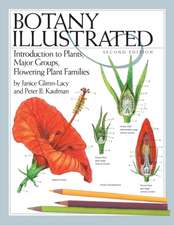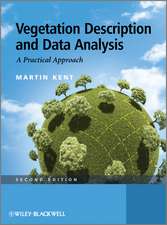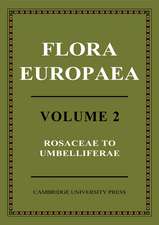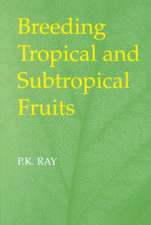Lotus japonicus Handbook
J. Stougaard Editat de Antonio J. Márquez M. Udvardi, M. Parniske, H. Spaink, G. Saalbach, J. Webb, M. Chiurazzi, A.J. Márquezen Limba Engleză Hardback – 26 oct 2005
| Toate formatele și edițiile | Preț | Express |
|---|---|---|
| Paperback (1) | 949.73 lei 6-8 săpt. | |
| SPRINGER NETHERLANDS – 19 oct 2010 | 949.73 lei 6-8 săpt. | |
| Hardback (1) | 959.19 lei 6-8 săpt. | |
| SPRINGER NETHERLANDS – 26 oct 2005 | 959.19 lei 6-8 săpt. |
Preț: 959.19 lei
Preț vechi: 1169.74 lei
-18% Nou
Puncte Express: 1439
Preț estimativ în valută:
183.57€ • 189.38$ • 155.36£
183.57€ • 189.38$ • 155.36£
Carte tipărită la comandă
Livrare economică 05-19 martie
Preluare comenzi: 021 569.72.76
Specificații
ISBN-13: 9781402037344
ISBN-10: 1402037341
Pagini: 384
Ilustrații: XXII, 384 p.
Dimensiuni: 155 x 235 x 20 mm
Greutate: 0.84 kg
Ediția:2005
Editura: SPRINGER NETHERLANDS
Colecția Springer
Locul publicării:Dordrecht, Netherlands
ISBN-10: 1402037341
Pagini: 384
Ilustrații: XXII, 384 p.
Dimensiuni: 155 x 235 x 20 mm
Greutate: 0.84 kg
Ediția:2005
Editura: SPRINGER NETHERLANDS
Colecția Springer
Locul publicării:Dordrecht, Netherlands
Public țintă
ResearchCuprins
Lotus japonicus’s a model system.- Lotus-related species and their agronomic importance.- Drought and saline stress.- Methods for studying nodule development and function.- A procedure for in vitro nodulation studies.- Arbuscular mycorrhiza.- Concurrent visualization of gusA and lacZ reporter gene expression.- Embedding root and nodule tissue in plastic (BMM).- RNA isolation using phase extraction and LiCl precipitation.- RNA isolation using CsCl gradients.- 96-Well DNA isolation method.- Genome structure analysis.- Transcriptome analysis using cDNA arrays.- Lotus japonicus expression database.- Procedures for mass spectrometric proteome analysis.- Isolation of peribacteroid membranes for proteome analysis.- Metabolome analysis using GC-MS.- Mutagenesis.- A mutant catalogue of Lotus japonicus.- Tilling.- Ds gene-tagging.- Mapping and map-based cloning.- An in silico strategy towards the development of legume genome anchor markers using comparative sequence analysis.- Information transfer: mapping and cloning in other legumes.- Agrobacterium-mediated in vitro transformation.- Induction of hairy roots for symbiotic gene expression studies.- Transformation-regeneration procedure for Lotus japonicus.- Agrobacterium rhizogenes pRi TL-DNA integration system: a gene vector for Lotus japonicus transformation.- Vectors for reverse genetics and expression analysis.- Nitrate assimilation: Influence of nitrogen supply.- Nitrate and ammonium assimilatory enzymes.- Transgenic plants affected in nitrate assimilation.- Secondary metabolite profiling.- Phenolic Compounds: extraction and analysis.- Elicitation of isoflavan phytoalexins.- An update of work published on Lotus japonicus.
Caracteristici
Basic information and methodology for studying a leading model plant First comprehensive and useful collection of in vivo and in vitro protocols for working with this model legume Authors are key figures in legume research Some of the described methods have been optimised specifically for this plant, but others may be also suitable for other plant species Also addresses a broad audience with interest in plant molecular biology




















